31 Traditional Wurst Varieties: A Tasty German Sausage Tour
Wurst, a beloved culinary treasure, represents more than just a simple sausage in traditional cuisine.
German meat artisans have perfected these savory delicacies through generations of careful crafting and regional expertise.
Each variety tells a unique story of local ingredients, cultural heritage, and time-honored preparation techniques.
Meat lovers recognize wurst as a versatile food that transcends mere sustenance, embodying rich gastronomic traditions.
Regional variations showcase incredible diversity in spices, textures, and cooking methods that reflect distinctive community identities.
Passionate cooks and food enthusiasts appreciate the intricate skills required to create these carefully balanced meat delicacies.
Complex flavor profiles and time-tested techniques make wurst a remarkable culinary art form that continues to delight palates.
Below are 31 traditional wurst varieties that will spark your culinary curiosity:
Wurst Varieties with a Rich Tradition
Butcher shops and markets across Europe display an array of sausages with deep roots. Smoked, spiced, or boiled, each wurst has its loyal following.
Nurnberger Bratwurste
Nurnberger Bratwurste are delicate German sausages steeped in centuries-old Bavarian culinary tradition, originating from Nurnberg's historic city.
Regional butchers craft these small pork sausages using precise recipes featuring marjoram as their signature spice.
Measuring just 7-9 centimeters long, these slender bratwursts weigh approximately 20-25 grams each, distinguishing them from larger German sausage varieties.
Local regulations strictly control their production, ensuring authentic preparation methods and premium ingredients.
Carefully ground pork forms the base, blended with salt, pepper, and subtle hints of ginger or nutmeg.
Restaurants and street vendors typically serve them with sweet mustard and fresh bread.
Bratwurst
Bratwurst represents a classic German sausage born from centuries of meat preservation techniques and culinary creativity.
German butchers originally crafted these savory links from unused meat scraps as a practical winter survival food.
Originating with Celtic traditions and refined by Franconians, bratwurst emerged in Eastern Germany during the 1300s as a resourceful protein source.
Farmers typically prepared these sausages fresh each morning, consuming them by noon to prevent spoilage.
Traditional bratwurst combines ground pork or veal with distinctive spices and herbs.
Most Germans enjoy bratwurst grilled and served with mustard, sauerkraut, or alongside potato salad.
European food markets and street festivals frequently showcase this beloved national sausage as a cultural culinary symbol.
Thuringer Rostbratwurst
Thuringer Rostbratwurst are legendary German sausages steeped in culinary history since 1613.
Distinguished by their distinctive low-fat profile, these sausages feature finely minced pork seasoned with a complex blend of caraway, marjoram, salt, pepper, and garlic.
Celebrated by cultural icons like Martin Luther and Goethe, these sausages reflect traditional German meat preparation techniques.
Regional recipes create subtle variations in spice combinations and preparation methods.
Craftsmen carefully select premium meat, often mixing pork with beef or veal for enhanced flavor.
German sausage enthusiasts prize these slender links for their authentic taste and historical significance.
Street vendors and local markets across Thuringia proudly serve these traditional sausages.
Regional pride and generations of culinary expertise ensure Thuringer Rostbratwurst remain a beloved national specialty.
Regensburger Wurst
Regensburger wurst is a premium German sausage crafted in Regensburg with a distinctive recipe blending finely ground lean pork and select spices.
Butchers meticulously prepare these sausages by mixing ground meat with precise salt and seasoning proportions.
Traditional production methods involve smoking and boiling the sausages to enhance their rich flavor profile.
German culinary experts consider this regional specialty a prime example of authentic Bavarian meat preparation.
Local restaurants often serve Regensburger wurst as a standalone dish or incorporate it into sandwiches and salads.
Pork used in these sausages comes from carefully selected cuts, ensuring consistent quality and taste.
Small chunks of meat provide textural variation within the sausage.
Regional pride surrounds this sausage, which has maintained its original 19th-century preparation techniques through generations.
Currywurst
Currywurst embodies Germany's most iconic street food, transforming a simple sausage into a beloved national culinary treasure.
German bratwurst serves as the primary protein, sliced and generously topped with a spicy curry-infused tomato sauce.
Pureed tomatoes create the sauce's signature gravy-like consistency, which gets a vibrant kick from aromatic curry powder.
Street vendors across Germany have perfected this quick snack, typically serving it with crispy french fries or a soft kaiser roll.
Multiple sausage varieties can form the base, though traditional bratwurst remains the most popular choice.
Each serving receives a light dusting of yellow curry powder for an extra flavor boost.
Berliners especially claim currywurst as their ultimate comfort meal, celebrating its unpretentious yet deeply satisfying nature.
Mettwurst
Mettwurst is a bold German sausage bursting with rich flavor and cultural heritage, crafted from a savory blend of pork and beef infused with aromatic spices like garlic, pepper, and caraway.
Regional German traditions shape its unique preparation, involving careful curing and cold smoking or air-drying techniques that enhance its deep, complex taste profile.
Versatile by nature, this sausage transforms meals through multiple serving styles, from classic accompaniments with kale or cabbage to simple bread spreads and hearty stew ingredients.
Alcoholic spirits such as rum and cognac often contribute additional depth to its distinctive flavor, making each bite a celebration of traditional German charcuterie.
Firmer varieties offer additional culinary flexibility, allowing cooks to incorporate the sausage into diverse dishes.
Skilled butchers take pride in crafting each mettwurst with precise spice combinations and expert smoking methods.
Weiwurste
Weisswurst are traditional Bavarian white sausages originating in Munich, crafted with a unique boiling method that sets them apart from other German sausages.
German butcher Sepp Moser accidentally invented these delicate sausages in 1857 when he ran out of thick sausage casings at his restaurant.
Thin-skinned and pale in color, these sausages are made from minced veal and pork back bacon seasoned with parsley, onions, and subtle spices.
Locals typically enjoy weisswurst as a mid-morning breakfast meal, traditionally served with sweet mustard, fresh pretzels, and wheat beer.
Authentic preparation requires gentle poaching in hot water for about 10 minutes to prevent skin rupture.
Bavarian culinary tradition dictates eating weisswurst before noon, reflecting the sausage's historical lack of refrigeration.
Knackwurst
Knackwurst are bold German sausages bursting with intense garlic flavor and a signature crispy snap when bitten.
Originating from northern Germany, these thick, short sausages blend ground pork and beef with robust seasoning for maximum taste.
German culinary traditions recommend pairing knackwurst with tangy sauerkraut, creamy potato salad, and zesty pickles.
Cold beer perfectly complements the sausage's rich, fatty profile.
Grilling or pan-frying creates a crackling exterior that makes each bite exciting.
Mustard serves as the classic condiment that elevates the sausage's deep, meaty essence.
Braunschweiger
Braunschweiger is a hearty German pork liver sausage dish celebrated for its rich, smoky flavor and simple preparation.
Originating in the Lower Saxony region, this traditional meal combines liverwurst with crispy bacon or smoked meat.
Butchers carefully craft the sausage using high-quality pork liver, spices, and unique seasoning blends.
Locals typically slice the sausage and fry it until golden brown and crispy.
Restaurants across Germany feature Braunschweiger as a classic comfort food.
Wiener Wurstchen
Wiener wurstchen are iconic Austrian sausages pioneering a groundbreaking meat blend that transformed traditional frankfurter recipes.
Created in 1805 by Johann Georg Lahner, these slender sausages combine finely chopped pork and beef with aromatic spices like white pepper, coriander, and paprika.
Lahner's innovative technique involved stuffing the meat mixture into thin sheep intestines before smoking and parboiling the sausage.
Originating in Vienna, these sausages quickly gained popularity across Austria and beyond.
Lahner initially called his invention Lahners wurstel, which later evolved into frankfurter wurstel.
Authentic wiener wurstchen feature a distinctive flavor profile from carefully selected spices and precise preparation methods.
Professional butchers continue to honor Lahner's original technique when crafting these classic Austrian sausages.
Frankfurter Wurstchen
Frankfurter wurstchen are slim, traditional German sausages originating from Frankfurt with a rich culinary heritage spanning centuries.
German butchers carefully craft these pork-based delicacies inside natural sheep casings using precise smoking and boiling techniques.
The sausages develop a distinctive smoky flavor through careful preparation methods passed down through generations.
Protected by German law since 1860, frankfurter wurstchen can only be officially named if produced in Frankfurt and surrounding regions.
Chefs typically serve these sausages heated in simmering water alongside classic accompaniments like mustard, horseradish, bread, or potato salad.
Local Germans often pair frankfurter wurstchen with crisp apple wine for an authentic dining experience.
Leberwurst
Leberwurst represents a classic German sausage packed with rich, intense flavors from ground pork liver, onions, and bold spices.
Originating in Germany, this spreadable meat product delivers a robust taste profile that delights European cuisine enthusiasts.
Locals traditionally enjoy leberwurst sliced on fresh bread with tangy mustard and crisp pickles.
Restaurants and home cooks often serve the sausage alongside sauerkraut or as a quick sandwich filling.
Butchers carefully blend liver with specific spice combinations to create unique regional variations.
Germans consider leberwurst a staple protein source with deep cultural significance.
Nutritionally, the sausage provides high protein and iron content from its liver base.
Regional recipes vary across different German states, reflecting local culinary traditions and ingredient preferences.
Knipp
Knipp is a rustic German sausage from Bremen that transforms humble ingredients into a hearty culinary delight.
Bremen locals celebrate this unique meat blend crafted with ground pork or beef, oats, and robust seasonings like allspice, salt, and pepper.
Cooks carefully mix the ingredients to create a distinctive sausage with a slightly rough texture and deep flavor profile.
Germans typically serve knipp on toasted white or wholemeal bread, making it a satisfying breakfast or casual meal option.
Regional pride surrounds this unpretentious dish, which highlights Bremen's rich food heritage.
Despite its unattractive appearance, knipp offers an authentic taste of northern German cuisine.
Gelbwurst
Gelbwurst is a smooth, pale German sausage originating from Bavaria with a distinctive yellow hue derived from saffron-dyed casings.
German butchers craft this delicate meat mixture using finely ground pork, veal, beef, or chicken seasoned with an aromatic blend of nutmeg, mace, pepper, ginger, cardamom, and lemon.
Mild and tender, gelbwurst offers a gentle taste experience that sets it apart from more robust sausage varieties.
Bavarian cuisine proudly features this sausage as a testament to its rich culinary heritage.
Germans typically enjoy gelbwurst sliced thin as part of a cold cut platter or breakfast spread.
Plockwurst
Plockwurst is a classic German sausage distinguished by its unique block-like shape and intense flavor profile.
German butchers carefully craft this dry-cured specialty using a precise blend of lean beef, semi-fat pork, and back fat trimmings.
Regional meat experts season the sausage with a complex mix of spices including salt, black pepper, paprika, and coriander.
Dextrose helps enhance the meat's natural sweetness and preservation.
Traditional production methods ensure a rich, concentrated taste that reflects authentic German charcuterie techniques.
Austrian regions also embrace this sausage as a popular regional delicacy.
Meat processors typically slice plockwurst thin for sandwiches or serve it as a standalone appetizer.
Cold cuts enthusiasts prize this sausage for its robust flavor and traditional preparation.
Bockwurst
Bockwurst are traditional German sausages celebrated for their smooth texture and mild flavor profile, crafted from finely ground veal or pork mixed with select herbs and spices.
German cuisine embraces these pale-colored sausages as a classic street food staple popular across beer halls and casual dining venues.
Originating in Berlin around 1889, these sausages were first created by pub owner Richard Scholtz as a complementary dish to bock beer.
Natural casings give bockwurst their distinctive shape and tender consistency, making them ideal for simmering or grilling.
Meat composition varies between veal, pork, or combined blends, allowing for subtle flavor variations.
Chefs season bockwurst with signature herb combinations like parsley, chives, and nutmeg.
Bregenwurst
Bregenwurst is a distinctive German sausage from Lower Saxony featuring a unique blend of pork, pork belly, and traditionally brain meat.
Regional butchers craft this specialty with carefully selected spices like white pepper, cumin, mace, and onions.
Historically prepared using pig or cattle brain, the sausage derives its name from "bregen," meaning brain in the local dialect.
Local cooks serve Bregenwurst in multiple ways, enjoying it raw or transforming its texture through boiling and stewing.
German cuisine celebrates this traditional sausage as a flavorful protein option with deep regional roots.
Culinary traditions surrounding Bregenwurst reflect generations of German food preparation techniques.
Lyoner Wurst
Lyoner wurst are distinctive German sausages crafted from pork, bacon, and robust spices that deliver an intense garlicky flavor profile.
Originating from the French city of Lyon, these horseshoe-shaped delicacies undergo a unique parboiling and hot-smoking process that enhances their rich taste.
German butchers carefully blend meat ingredients, sometimes incorporating beef for added complexity.
Traditionally served cold or hot, Lyoner wurst frequently appear in sandwiches, salads, and charcuterie platters across Germany.
Locals often call this sausage fleischwurst, while international markets recognize it as German bologna.
Authentic preparation requires precise smoking techniques that seal in the sausage's distinctive flavor and smooth consistency.
Potato Wurst (Kartoffelwurst)
Kartoffelwurst embodies German culinary innovation, blending hearty potatoes with rich meats in a savory sausage that celebrates rural cooking traditions.
German butchers craft this specialty by mixing 50-70% chopped pork or beef with potatoes, creating a unique texture and flavor profile.
Bacon contributes additional depth and richness to the sausage mixture.
Stewed onions enhance the overall taste and provide moisture to the blend.
Skilled butchers often incorporate offal or groats to increase nutritional value.
Frying the sausage before serving ensures a crispy exterior and succulent interior.
Blutwurst
Blutwurst is a traditional German blood sausage bursting with rich flavor and cultural significance.
German butchers craft this hearty specialty by combining pork, animal blood, and fat with aromatic seasonings like marjoram and thyme.
Typically cooked and served cold, blutwurst develops a firm texture that makes it perfect as an appetizer or charcuterie component.
Skilled artisans carefully blend meat and blood to ensure a smooth, consistent texture and robust taste.
German culinary traditions deeply respect this sausage's preparation methods, which have been passed down through generations.
Each region adds its distinct touch, making blutwurst a dynamic and flavorful delicacy.
Meat lovers appreciate its intense, earthy flavor and cultural heritage.
Zungenwurst
Zungenwurst is a German blood sausage renowned for its unique texture and intense flavor profile featuring chopped pickled tongues within a rich meat mixture.
German butchers carefully blend pork blood, fat, and tongue pieces with robust spices to create this distinctive delicacy.
Traditional production methods involve carefully selecting high-quality pork ingredients and maintaining precise spice ratios.
Butchers typically stuff the sausage mixture into natural casings before slow-cooking or smoking to enhance its complex taste.
Zungenwurst serves as a classic cold cut often enjoyed with bread or as part of charcuterie platters.
Regional Germanic communities continue to preserve this authentic sausage-making tradition passed through generations.
Schmierwurst
Schmierwurst is a traditional German spreadable sausage made from finely ground pork and bacon, blending rich flavors through fermentation and smoking processes.
Rohwurst categories include this uncooked sausage alongside mettwurst and teewurst, creating a distinctive German charcuterie experience.
Smooth texture defines its appeal, with white pepper and coriander adding complex seasoning to the meat mixture.
Prepared in natural or artificial casings, schmierwurst delivers intense umami characteristics prized in German cuisine.
Fermentation ensures deep flavor development and preservation techniques passed through generations.
Pork quality determines the sausage's ultimate taste profile and smoothness.
Aachener Weihnachts-Leberwurst
Aachener Weihnachts-Leberwurst is a beloved German holiday sausage steeped in over 120 years of culinary tradition from Aachen.
Butchers meticulously craft this special liverwurst using fresh liver and a distinctive spice blend featuring cardamom, anise, and coriander.
Cream adds richness to the sausage's unique flavor profile, creating a Christmas delicacy that has become synonymous with regional festive celebrations.
Local butcher shops have perfected the recipe since the 19th century, ensuring consistent quality and taste.
Competitive sausage-making contests spanning over 40 years have further elevated its reputation.
Cranberries or honey frequently complement the spice mix, adding subtle sweetness.
Germans consider this sausage a cultural staple during winter festivities.
Holiday tables across the region proudly feature this traditional Aachen specialty, connecting generations through its memorable taste.
Kohlwurst
Kohlwurst represents a robust northern German sausage featuring chunky pork and bold smoky flavors unique to traditional German cuisine.
Originating in regions like Schleswig-Holstein and Lower Saxony, this hearty sausage derives its name from its classic pairing with cabbage dishes.
Hunters and farmers traditionally prepared Kohlwurst using fatty pork cuts seasoned with salt, pepper, and marjoram.
Smoked preparation gives the sausage its distinctive rich taste and dense texture.
Grunkohl mit Pinkel remains the most popular preparation, combining boiled sausage with kale and potatoes.
Germans typically enjoy Kohlwurst during winter months as a warming meal.
Each serving connects modern diners with generations of German culinary heritage.
Pinkel
Pinkel are hearty German sausages rooted in northwestern Germany's culinary traditions, specifically originating in Lower Saxony, Bremen, and Oldenburg regions.
Winter meals feature these distinctive sausages as a classic companion to Grunkohl und Pinkel, a beloved regional dish combining kale and sausage.
Crafted from coarse pork meat, oats, and spices, Pinkel sausages boast a unique texture and robust flavor profile.
Regional butchers carefully blend ingredients to create these rustic links that reflect traditional German meat preparation techniques.
Locals traditionally serve Pinkel during cold months, making them a warming comfort food for families and gatherings.
Bremen and Friesland communities particularly cherish these sausages as a staple winter meal.
German cuisine celebrates Pinkel as more than just a food item, but as a cultural symbol of regional cooking traditions.
Rural communities have preserved this sausage-making method for generations, ensuring its continued culinary significance.
Rote Wurst
Rote Wurst represents a classic German sausage originating in southern Germany's Swabian region, distinguished by its signature deep red color from paprika and spice blends.
Crafted from finely ground pork or pork-beef combinations, this sausage boasts a smooth, rich texture that appeals to meat lovers.
Grilling over open flames transforms Rote Wurst into a smoky delicacy with a crisp exterior and juicy interior.
Pre-cooked methods include smoking and steaming, which enhance its savory profile.
Baden-Wurttemberg locals consider this sausage a regional specialty with deep culinary roots.
German butchers carefully select premium meats to create its distinctive flavor.
Bauernbratwurst
Bauernbratwurst represents German peasant cuisine with its robust pork sausage packed with distinctive regional spices and rustic charm.
Rural German farmers traditionally crafted this hearty bratwurst using coarsely ground meat seasoned with garlic, pepper, marjoram, and paprika.
Smoky preparation methods enhance its deep, rich flavor profile that distinguishes it from more refined sausage varieties.
Traditional production involves hand-chopping meat chunks instead of fine grinding, creating a textured protein experience.
German butchers often use a mix of pork and sometimes beef to develop complex taste layers.
Family recipes passed through generations contribute to each unique Bauernbratwurst interpretation.
Street festivals and autumn markets frequently feature this beloved sausage as a central culinary attraction.
Weckewerk
Weckewerk is a hearty Northern Hessian sausage crafted from ground pork, stale bread, and robust seasonings.
German peasants historically developed this rustic dish as a clever method for eliminating food waste by transforming leftover ingredients into a satisfying meal.
Rural families would carefully blend chopped pork with bread crumbs and spices, creating a rich and flavorful mixture.
Butchers traditionally prepared weckewerk by thoroughly mixing and cooking the ingredients until they formed a dense, compact texture.
Salt, pepper, and marjoram frequently enhance the sausage's distinctive taste profile.
Small communities continue preparing this traditional specialty during winter gatherings and local festivals.
German culinary heritage deeply respects such resourceful recipes that minimize waste while delivering exceptional flavor.
Thuringer Leberwurst
Thuringian liver sausage is a traditional German delicacy crafted with at least 51% locally sourced ingredients from Thuringia, ensuring authentic regional flavor.
Skilled butchers carefully blend select liver with distinctive seasonings like salt, braised onions, ground pepper, and Thuringian marjoram to create its unique taste profile.
Cold-smoking the sausage over beech wood imparts a rich golden-yellow color and enhances its complex flavor.
Meticulous preparation involves precise ingredient selection and smoking techniques passed down through generations.
Butchers take pride in maintaining strict regional standards for quality and authenticity.
Regional spices contribute to the sausage's robust and distinctive character.
Each sausage represents a culinary tradition deeply rooted in Thuringian heritage.
Careful crafting ensures a premium product that reflects Germany's rich sausage-making expertise.
Thuringer Rotwurst
Thuringian blood sausage stands as a traditional German delicacy crafted from rich pork, a hint of liver, and an aromatic blend of spices.
Regional butcher shops across Thuringia proudly showcase this centuries-old specialty sausage with deep cultural roots.
Farmers historically prepared this hearty sausage during annual slaughter festivals, transforming humble ingredients into a flavorful culinary treasure.
Salt, black pepper, marjoram, allspice, cloves, and onions create its distinctive, robust taste profile.
German butchers carefully mix these ingredients to achieve a perfect balance of savory flavors.
Generations have passed down techniques for preparing this protein-packed sausage with meticulous attention to detail.
Rural communities especially cherish this meat product as a testament to their agricultural heritage.
Germans consider this blood sausage a quintessential example of nose-to-tail cooking that wastes no part of the animal.
Stippgrutze
Stippgrutze is a rustic German regional dish that transforms simple barley groats into a hearty sausage-infused delicacy from Westphalia.
Crafted by simmering barley in rich sausage broth, this unique preparation gets mixed with pork offal and rendered fat for deep flavor complexity.
Spices like pepper and thyme enhance its robust taste profile, creating a distinctive culinary experience.
Cooks carefully mince and shape the ingredients into cylindrical portions, ensuring a consistent texture and appearance.
Regional German communities consider stippgrutze a classic comfort food that connects generations through its authentic preparation.
Meat lovers appreciate its intense savory qualities and connection to traditional rural cooking methods.
Westphalian kitchens continue to preserve this historic dish as a testament to their rich gastronomic heritage.
Are All Wurst Varieties Served Hot, or Are Some Best Enjoyed Cold?
Wurst, the beloved German-style sausage, comes in many forms - some meant to be enjoyed hot, others celebrated as cold cuts. Here’s how they differ:

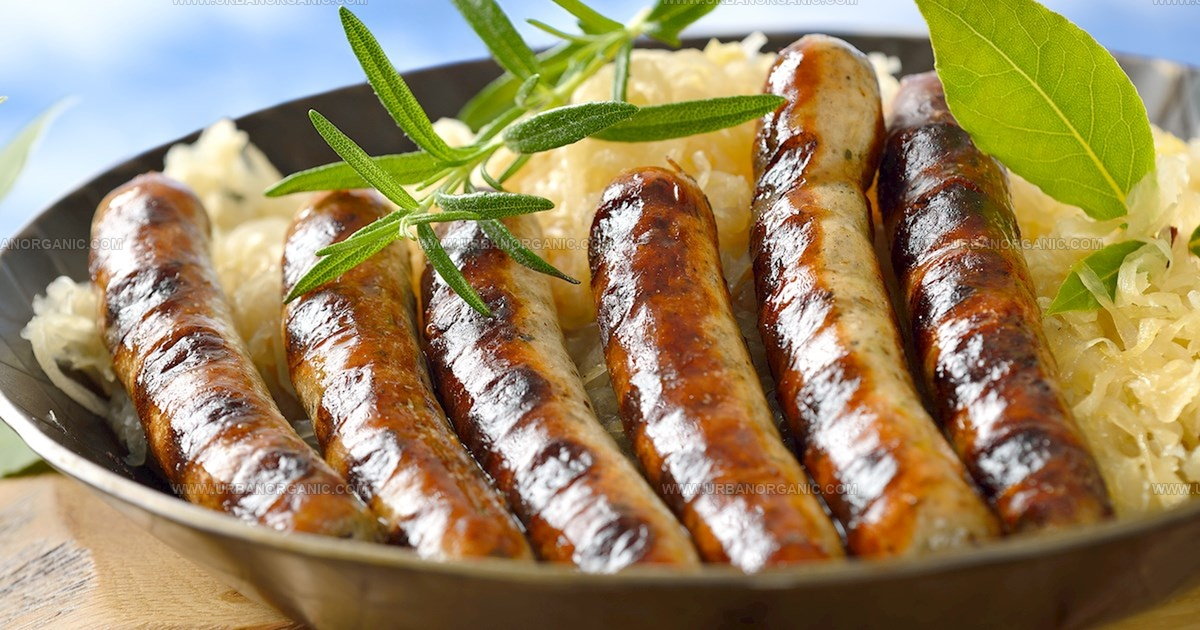
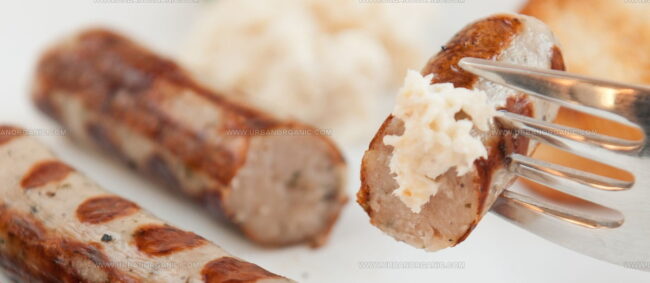
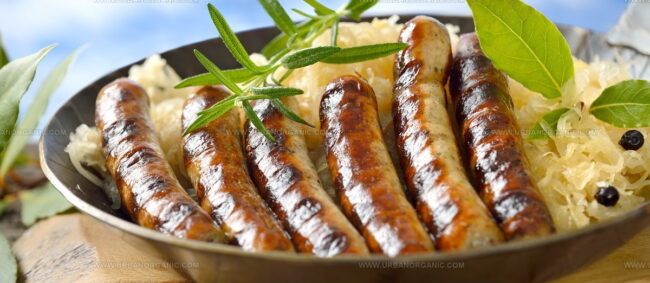
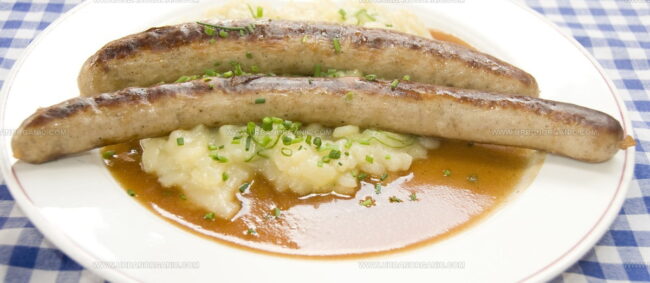
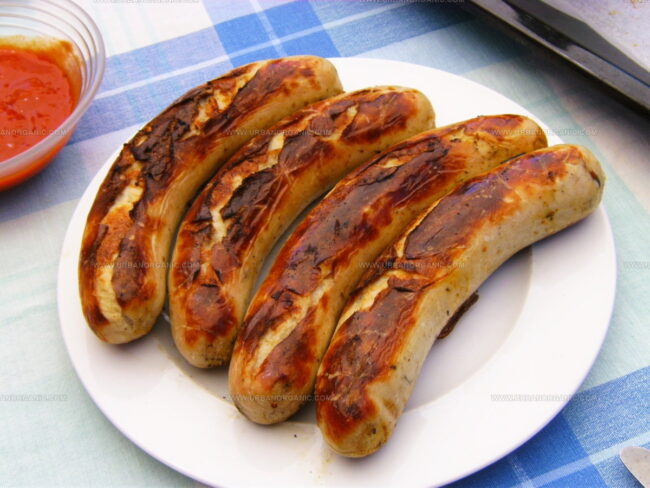

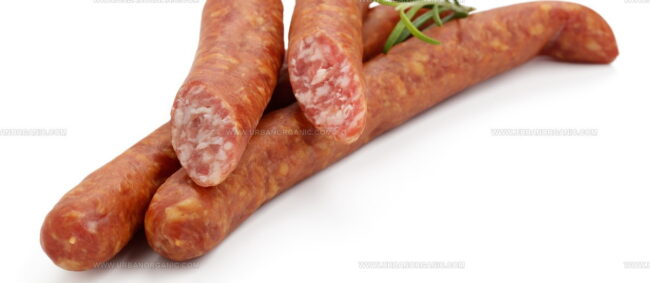
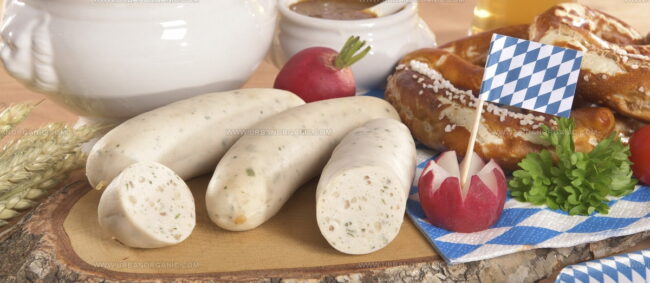
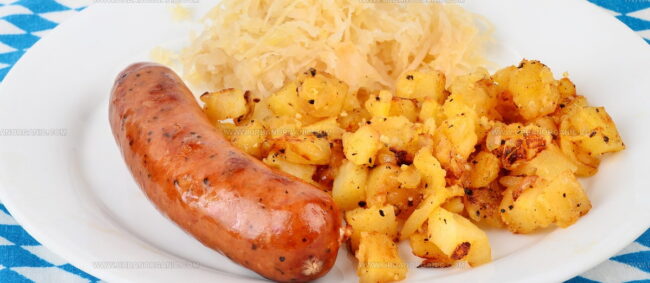
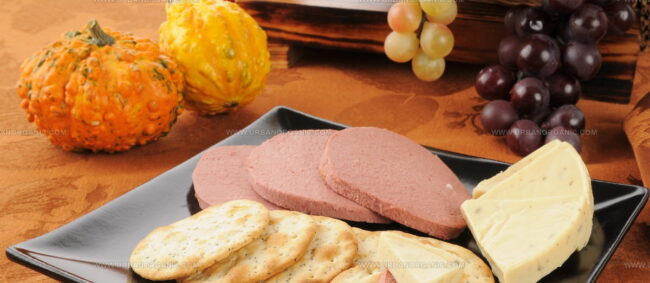
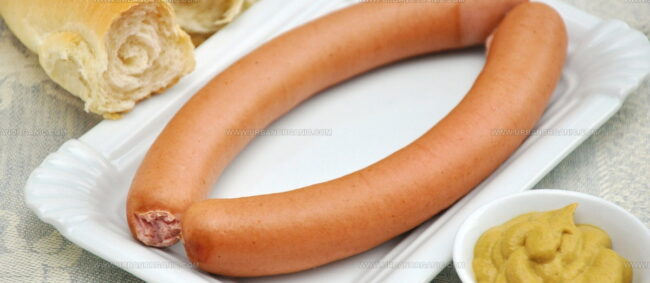
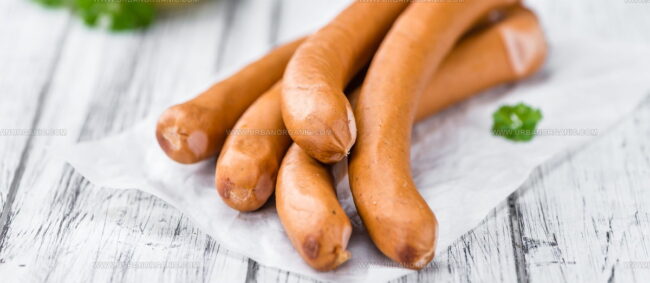
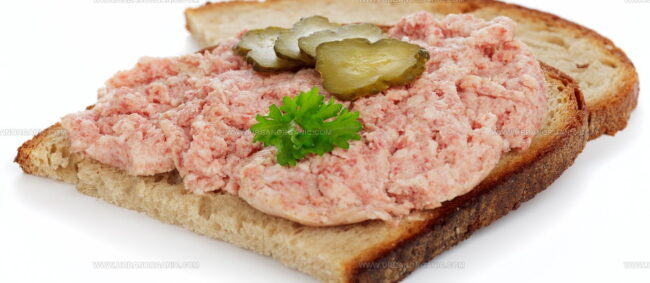
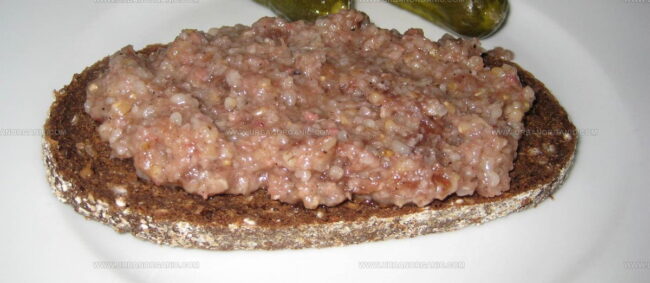
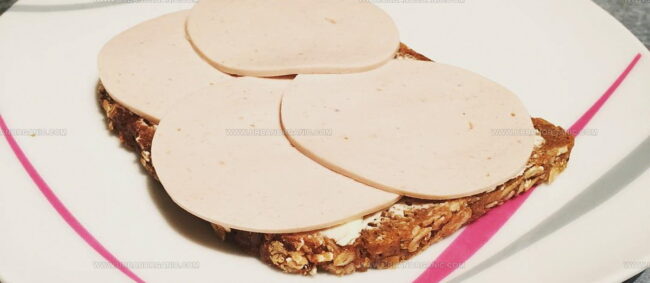
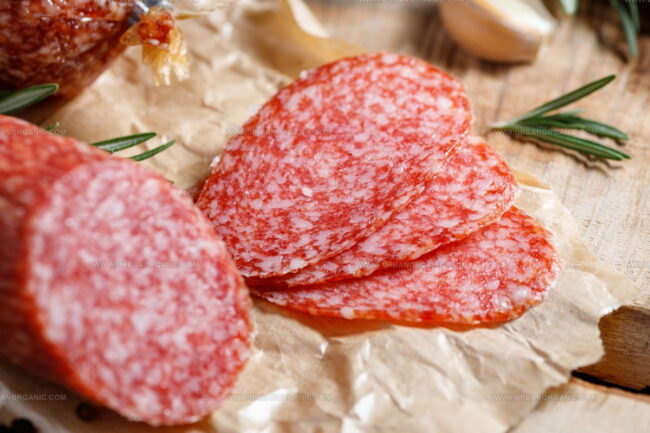

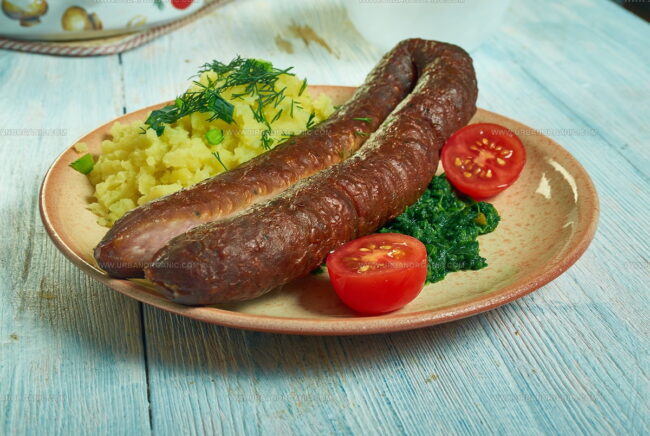
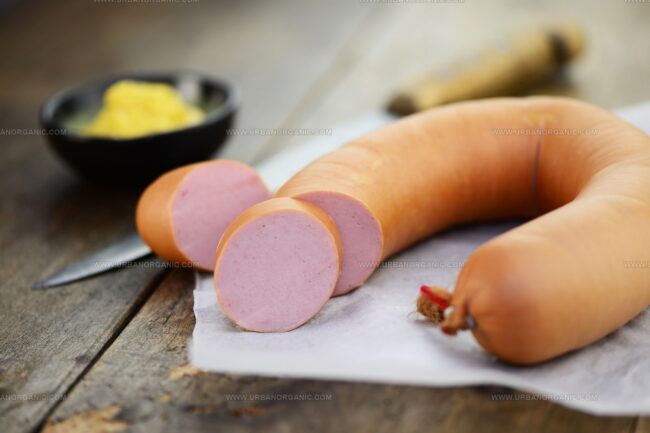
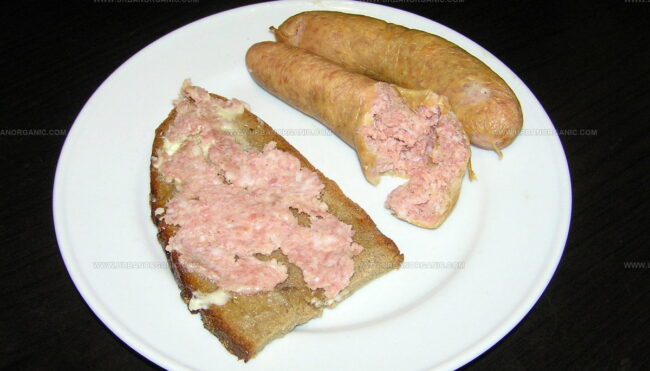

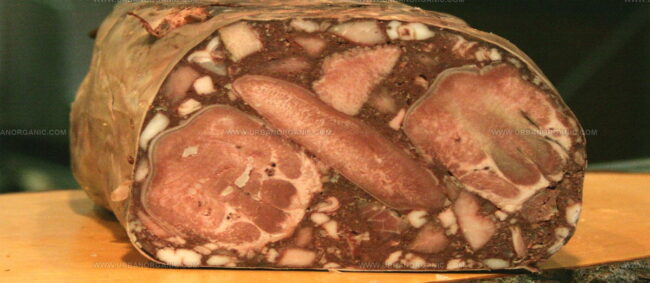
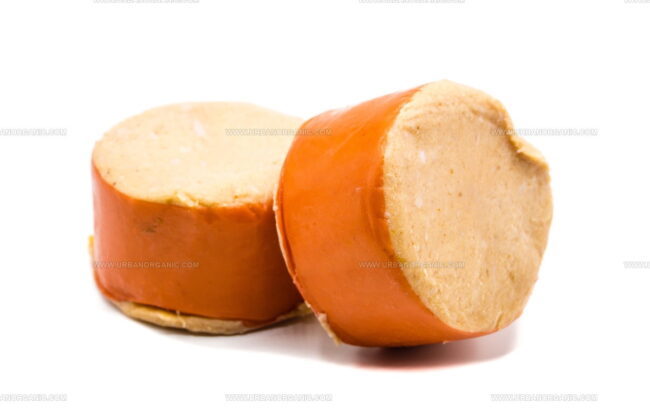
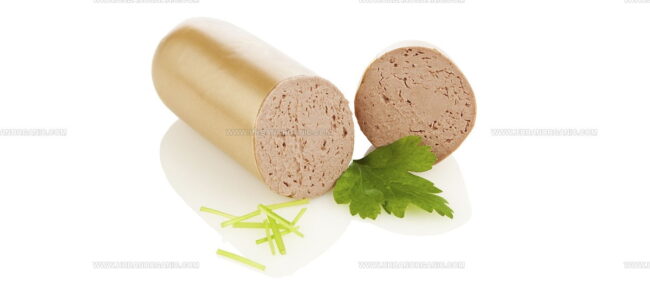

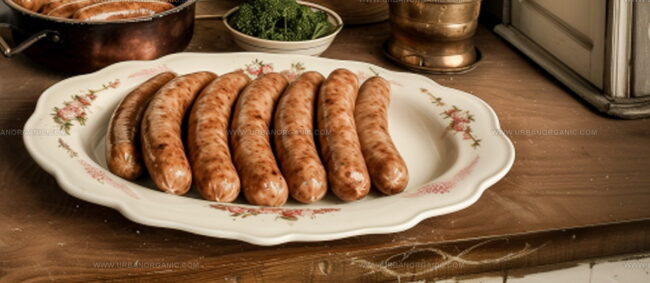
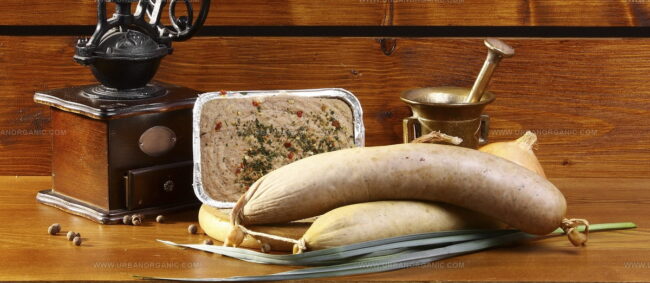
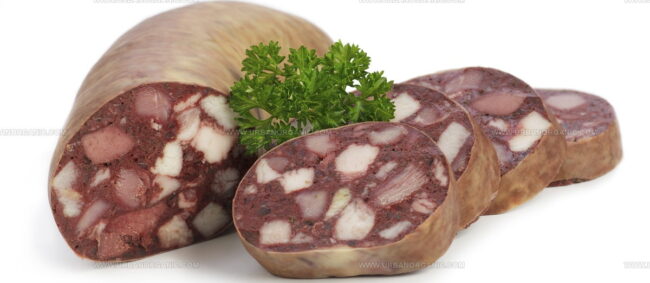
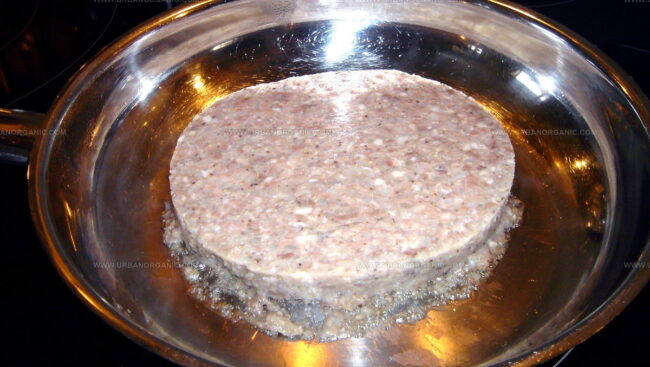

Jessica Martinez
Pastry Chef & Recipe Developer
Expertise
Organic Baking Techniques, Gluten-Free Recipe Development, Southwestern Dessert Specialties, Food Styling and Photography
Education
Santa Fe Community College (SFCC)
Jessica brings the sweet side to Urban Organic with her passion for baking and love for the Southwest. She trained at Santa Fe Community College and has built a career creating beautiful, gluten-free, and organic desserts that feel both nostalgic and new.
She believes baking should be fun, creative, and open to everyone, no matter your diet or skill level. Jessica’s recipes are simple enough to follow, but special enough to remember.